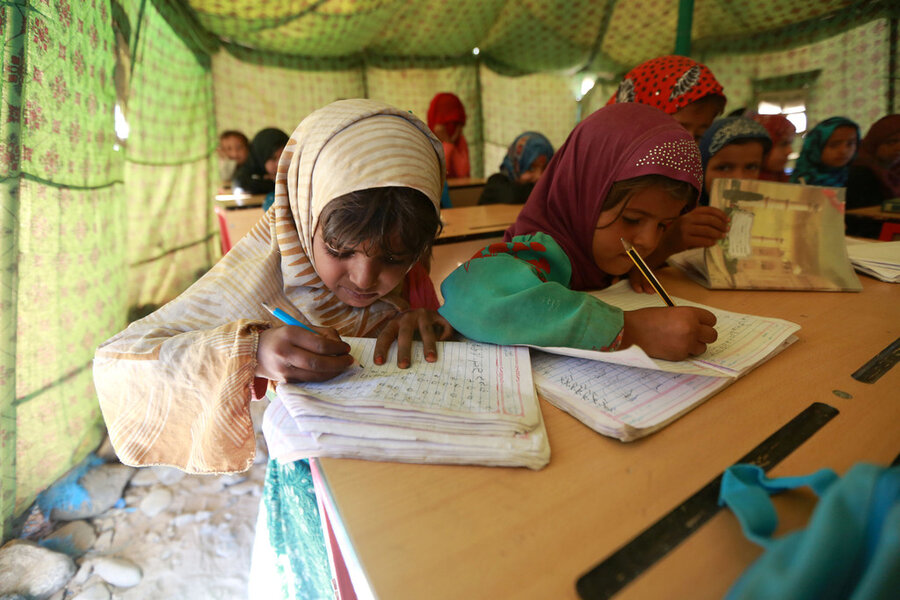A model of peace to help end Yemen’s war
Wars often can end faster when a vision of peace is clear. That may soon be the case in Yemen, a country that appears to be nearing an end to a three-year civil war as well as the world’s biggest humanitarian crisis.
On Wednesday, a 21,000-strong force led by a coalition of Arab nations entered the strategic port city of Hudaydah to oust the Iran-backed Houthi rebels that started the war and to force them to the negotiating table. The battle is significant enough that the United Nations Security Council met twice this week, in large part to ensure the flow of aid to millions and also to plan for Yemen being at peace. The UN and others need not look too far for a model.
Even though three-quarters of Yemen’s 27 million people are in need of basic aid, one province, Marib, has blossomed amid the conflict. It has become an island of calm and a welcoming place for more than a million displaced people – even boasting a university of 5,000 students and a low crime rate.
Iran and Saudi Arabia must still come to terms over their proxy fight in Yemen. But if the battle of Hudaydah leads to talks that end the war, then understanding how Marib has thrived would help in the design of a long-lasting peace for the rest of Yemen.
One key to Marib’s success was a national effort after the 2011 Arab Spring uprising to decentralize power. A new governor in the province, Sheikh Sultan al-Arada, who is also a highly respected local tribal leader, used the new powers to build a coalition to get rid of Houthi rebels and start rebuilding the province. His statesman-like style also won support from Saudi Arabia.
“Crucially, the backbone of all of this has been trust-building measures,” writes Adam Baron, an expert on Yemen, in a new paper for the European Council on Foreign Relations. The governor, Baron noted, pushed for greater accountability and transparency in public affairs.
“Marib’s newly acquired autonomy has allowed it to retain a share of its natural resource wealth, improve infrastructure, and expand government services, including paying state employees regularly and supporting a functioning judicial system,” Mr. Baron states.
As the Houthis continue to lose ground, Marib’s success could be replicated in other parts of the country that have already gained some stability. Its experience “holds wider lessons for Yemen’s future,” Baron concludes.
The chief lesson is that peace is attainable by decentralization of powers and the right qualities of leadership. Perhaps those ideas will be put on the negotiating table when talks start to end this war.





